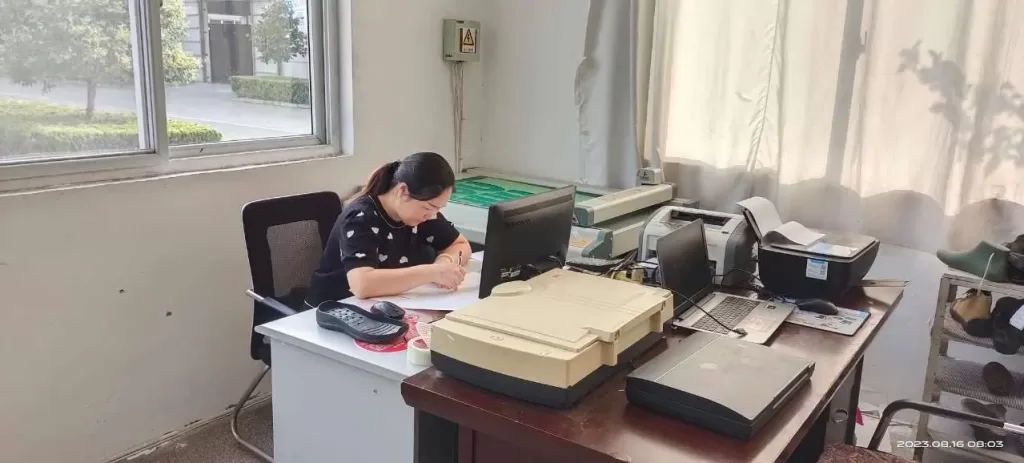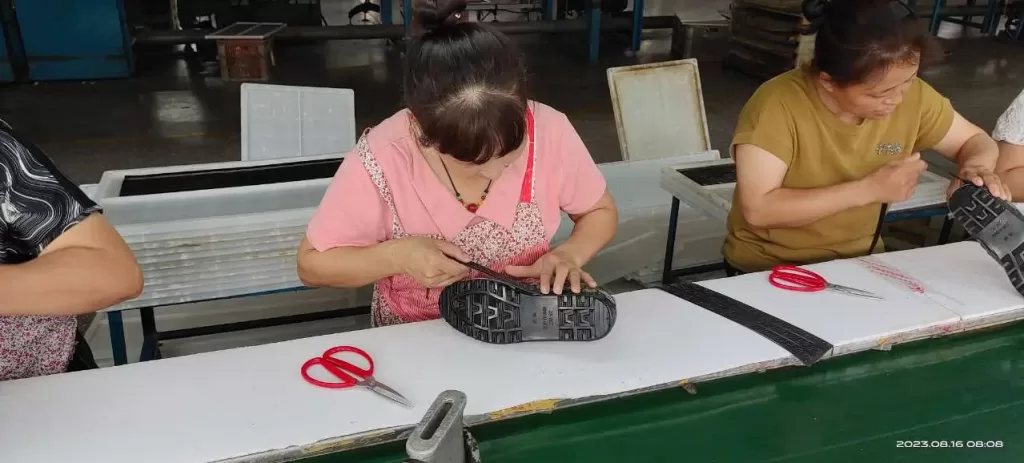Understanding the sample production procedure is crucial in the athletic shoe manufacturing industry. Whether you are a footwear designer, a brand owner, or simply curious about the behind-the-scenes process, this comprehensive guide will walk you through the steps involved in creating samples of athletic shoes.
Design: This is the starting point in creating a sample pair of athletic shoes. The design team determines the style, color, materials, and features of the shoes. They may draw inspiration from market trends, consumer preferences, and the brand’s style to create a unique and appealing design.

Supplier Selection: Choosing the right supplier is crucial to ensure the quality and timely delivery of the sample. The manufacturer should meet the required style, quality standards, target market, minimum order quantity, and target price. Collaborating with experienced footwear manufacturers or suppliers will ensure a smooth production process.
Sole Selection and Last Making: The sole is a critical component of athletic shoes, contributing to comfort and functionality. After selecting the supplier, they will assist in choosing the appropriate sole for the athletic shoes. If there is no existing sole that matches the design, customizing a new sole may be considered. Simultaneously, a last is made based on the shape of the sole. A last is a mold-like structure resembling the shape of a foot, used to maintain the shape of the shoe.

Pattern Making and Material Sourcing: Pattern making involves creating cutting templates based on the last. These templates guide the cutting of fabric and other materials into the desired shapes and sizes. Material sourcing includes procuring fabrics, leather, rubber, and other components. Ensuring that the sourced materials meet the quality and specification requirements of athletic shoes is essential.
Cutting, Stitching, and Lasting: Following the pattern templates, the fabric and other materials are cut into the required shapes and sizes using cutting tools. Subsequently, the cut parts are stitched together using sewing machines or specialized equipment to assemble the shoe upper. Finally, the stitched shoe upper is fixed onto the last to maintain the shape of the athletic shoe.

Sole Bonding and Finishing: Once the shoe upper is completed, the sole is bonded to the upper. This can be done using adhesives or stitching, depending on the chosen manufacturing method. After bonding, finishing takes place, including the removal of excess glue, tidying up loose threads, and ensuring the overall quality and appearance of the athletic shoe.
Quality Control and Packaging: After completing the shoe production, a quality control check is performed to ensure compliance with fit, comfort, durability, and aesthetics requirements. At this stage, any necessary adjustments or improvements may be made to ensure the highest standards of the final product. Following the quality control check, the sample athletic shoes are carefully packaged, ready for delivery to buyers for further testing and evaluation.
In conclusion, the sample production procedure for athletic shoes is a meticulous and multi-step process. Each stage, from design to packaging, plays a crucial role in ensuring the quality and accuracy of the final product. Remember, attention to detail and quality control are key to creating exceptional athletic shoe samples that meet the needs and expectations of athletes and consumers alike.
